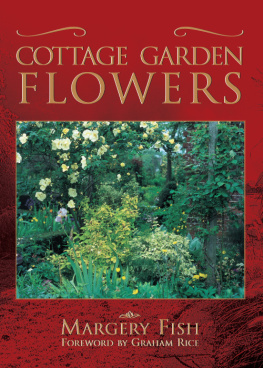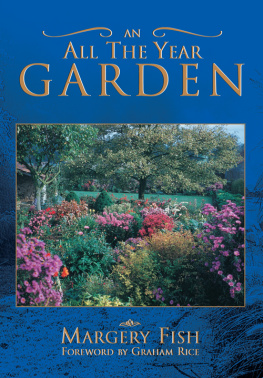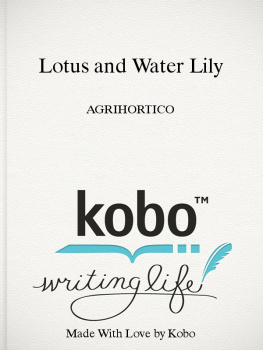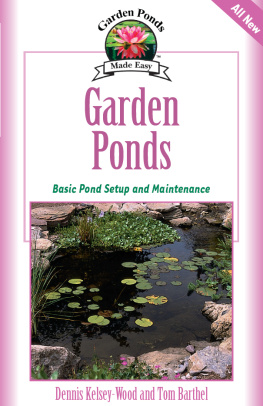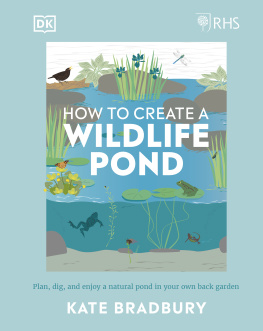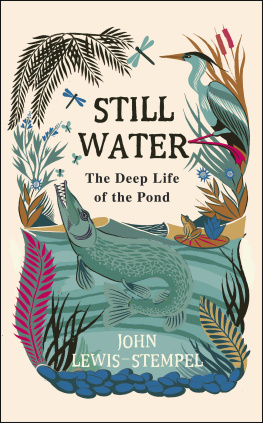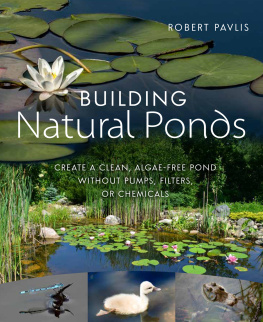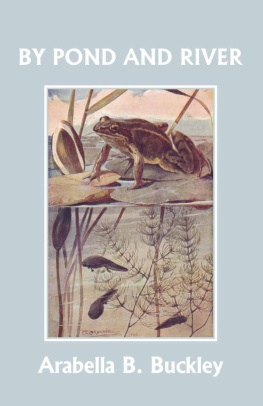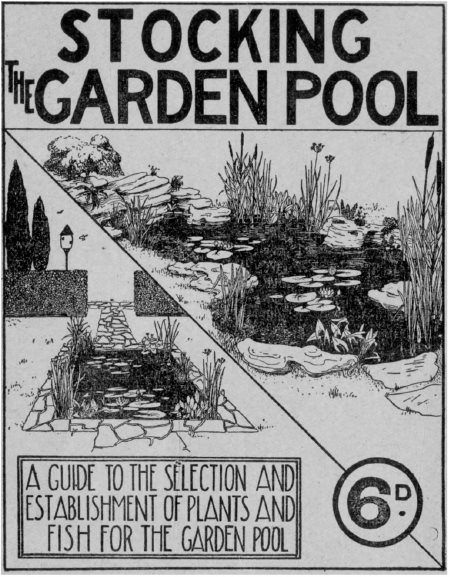
Copyright 2017 Read Books Ltd.
This book is copyright and may not be reproduced or copied in any way without the express permission of the publisher in writing
British Library Cataloguing-in-Publication Data
A catalogue record for this book is available from the British Library
DITCHFIELDS LITTLE WONDER BOOK No. 4
STOCKING THE
GARDEN POOL
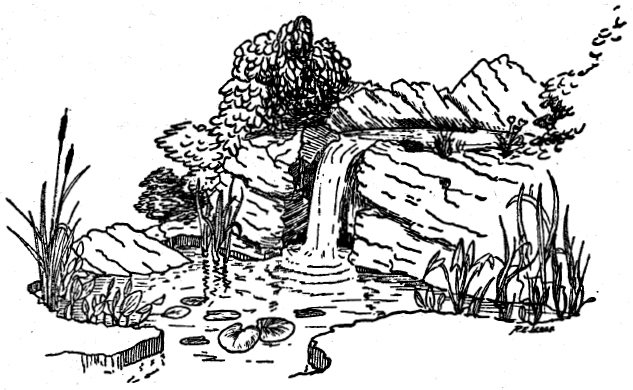
CONTENTS
STOCKING THE GARDEN POOL
INTRODUCTION
The intention of this book is to assist the reader in obtaining the best and most pleasing results from his garden pool; to enable him to prepare and carry out the task of furnishing it with both plants and fish.
It contains few details of the actual construction of the garden pool as the subject has been very thoroughly dealt with in a previous book in this series, entitled, Garden Pool Construction (Ditchfields Little Wonder Books No. 3), to which this book may well be regarded as a sequel.
If a pool has been constructed on sound principles, stocking is comparatively simple, but unfortunately there are far too many built by impatient enthusiasts or by building contractors who cannot be expected to appreciate the peculiar requirements of plants and fish. The result is all too often an uninteresting tank, a disappointment, and indeed not infrequently, an eyesore. If this is the case some structural alteration or the addition of plant pockets, without which incidentally, the pool can never be much more than a featureless water tank, will have to be made. For this reason the first chapter is designed to help the reader in making these alterations or modifications, should they be necessary.
The remainder of the book is devoted to the preparations necessary for planting, a list and description of some of the more useful and popular varieties, their function and how they may be obtained; a chapter dealing with the choice and selection of most suitable fish, and finally, an account of how the average pool may best be adapted for breeding purposes.
In short the book is designed to cover every aspect of stocking the garden pool and it is hoped that the information it contains will help to swell the growing numbers of delighted enthusiasts.

PLANT POCKETS
Whether it be a tiny water pocket in a rock garden, a neat formal pond of regular design in the centre of a spaceous lawn, or part of an ambitious layout of informal pools linked by streams and waterfalls, a garden pool must be abundantly stocked with aquatic plants, both submerged and marginal, if it is to attain that rare quality of beauty and charm.
It is not our intention to go into great detail concerning those conditions commonly, and somewhat controversially, referred to as the balance of aquatic life. Suffice it to be said that a condition of inter-dependence, involving the oxygen cycle and the absorbtion of fish secretions, does exist and plays a very important part in the healthy and mature garden pool.
Unless these conditions are established no amount of enthusiasm on the part of the pool owner will prevent his ultimate disappointment. Again, the more obviously functional value of the floating and marginal plants will be apparent in considering the shelter afforded to the fish in the very hot weather, and the sanctuary provided by the submerged plants to the young fry which would otherwise be devoured by their voraceous parents.
The pool structure should be carefully studied and if there are insufficient pockets, additions will have to be made.
There are a variety of simple methods of adding this pocketing, depending on the design and dimensions of the pool. It is almost impossible to have too many marginal pockets since the more plants there are flourishing around the perimeter the more furnished and delightful will be the finished article.
Many enthusiasts favour a marginal pocket completely encircling their pool, but it is perhaps advisable to leave one or two spaces to facilitate easy access for feeding fish, etc. By studying the illustrations the reader may judge which of the several methods suggested is best suited for his particular pool.
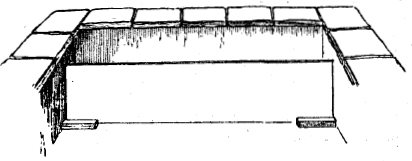
Generally speaking, pockets to suit almost every situation may be built of brick, or broken stone of the type used for dry walling or crazy paving, cemented to form a walled enclosure of the required dimensions, the top being between three and four inches below the water level.
In very small pools it may be felt that the use of such materials would take up too much room, although, being below the water level, the pocketing does not reduce the area of the water surface. However, if it be desired, slate, or in some cases, even sheets of rough-cast glass may be used.
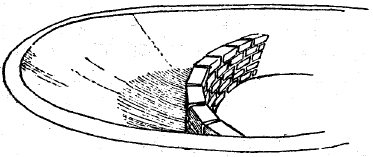

So far we have only dealt with the marginal pockets but, since it is undesirable to cover the entire floor of the pool with the soil in which it is necessary to establish the submerged varieties of plants, two other types of pocket will be required. The oxygenating plants present no difficulty at all since almost any shallow receptacle will serve the purpose, earthenware bowls of the type used for bulbs, ordinary plant pots or hardwood boxes are commonly used, while permanent pockets may be simply constructed by cementing four bricks or pieces of slate to form a square of the required dimensions.

Water-lilies require special care in establishing and it is advisable to provide as much room for their roots as possible. Undoubtedly the best accommodation for lilies is a long trough sunk in the floor of the pool entirely filled with compost with a top dressing of pebbles, but if these troughs have not been incorporated into the structure it is certainly not advisable to cut through the concrete base in order to add them. A satisfactory alternative is to build up a circular or rectangular structure of brick or stone in a similar manner to the method described for the marginal pockets.
The height of such pockets will depend upon the depth of the pool but nine inches should be regarded as the absolute minimum and should be able to retain not less than two cubic feet of compost or the consequent restriction to root development will result in stunted and unsatisfactory growth.
The number of pockets thus provided must be left to the discretion of the reader but, unless dwarf varieties are desired, it is best to avoid overcrowding and two or three pockets will be ample for the average sized pool.
CURING THE NEW CEMENT
The pocketing complete, it will be necessary to remove all harmful properties contained in the cement, ust as a newly constructed pool must be cured before fish or plants are introduced.
Next page







